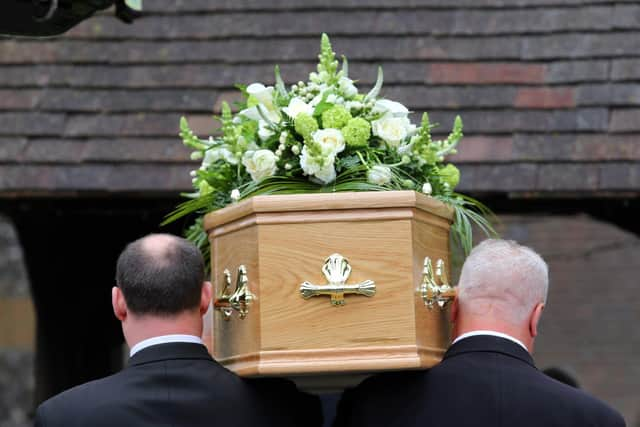Official figures confirm big rise in deaths in Preston
and live on Freeview channel 276
Preston saw a big increase in recorded deaths in 2020 compared to the average for the previous five years, analysis of official figures shows.
Health charity The King’s Fund described last year's death toll across England and Wales as "extraordinary" and is calling for a public inquiry to look at the Government’s handling of the pandemic.
Advertisement
Hide AdAdvertisement
Hide AdOffice for National Statistics data shows 1,519 deaths were registered in Preston last year – 283 (23%) more than the annual average of 1,236 between 2015 and 2019.


They were among the 84,000 recorded across the North West, which was around 12,300 higher than the preceding five-year average.
Health experts have repeatedly said “excess deaths” are a better measure of the overall impact of the coronavirus pandemic than simply looking at mortality directly linked to Covid-19.
This is because they capture deaths that may have been indirectly caused by the crisis, either due to people finding it harder to access medical care for other conditions, or avoiding help altogether.
Advertisement
Hide AdAdvertisement
Hide AdAcross England and Wales, 608,000 deaths were registered last year – 76,000 (14%) higher than the average for 2015 to 2019.
Veena Raleigh, senior fellow at The King’s Fund, said the ONS figures represented a “extraordinary death toll”.
“Of course, the pandemic is not over yet and there are still more deaths to come,” she said.
“At some stage, we hope there will be a public inquiry that will look at mistakes that could have been avoided.”
Advertisement
Hide AdAdvertisement
Hide AdDr Raleigh added: “The UK went into this pandemic having had a long period of austerity, which meant the NHS was already overstretched.
“The NHS has done an admirable job dealing with this virus. Their job was made harder by mistakes and delays in the Government’s handling of the pandemic.”
The London borough of Newham saw the largest surge in deaths of 336 council areas across England and Wales – the figure rose 36% compared to previous years.
At the other end of the scale, a handful of places saw a small drop in excess deaths.
Advertisement
Hide AdAdvertisement
Hide AdMai Stafford, a data analyst at the Health Foundation, said the differences between areas partly reflect pre-existing inequalities.
"People in the most deprived areas already have poorer health and are at greater risk of experiencing more severe symptoms from Covid-19," she said.
"They are also more at risk of getting the virus due to the type of jobs that they do and conditions they live in – such as overcrowded housing."
Separate ONS figures published recently showed the combined death toll for England and Wales last year was the highest since 1918 – the year of the “Spanish flu” – when 612,000 deaths were registered.
Advertisement
Hide AdAdvertisement
Hide AdBut changes in the age and size of the population mean this is not a like-for-like comparison.
The age-standardised mortality rate, which accounts for age and population size, was 1,044 per 100,000 population last year.
That was the highest since 2008, when it was 1092 per 100,000.
A Department of Health and Social Care spokeswoman said: “Every death is a tragedy and our deepest sympathies go to the families and loved ones of those who have died.
“Throughout the global pandemic the NHS has remained open for urgent care and we continue to urge anyone who needs healthcare to come forward.”